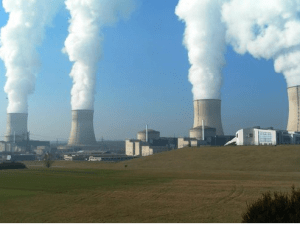
BY JACK DINI – What’s the message to the rest of the world when a country with the world’s fifth-largest oil reserves plans to invest in nuclear power? The oil-rich Arab emirate Abu Dhabi plans to get about 25% of its energy from nuclear stations. Two items have contributed to Abu Dhabi’s interest in nuclear power. First, the country didn’t foresee the rapid growth in electricity use and is now running out of its preferred fuel for power generation, natural gas. Secondly, Abu Dhabi would like to turn itself into a global energy center that would create high-quality jobs even after its oil runs out. (1)
The United Arab Emirates (UAE), comprising seven states including Abu Dhabi and Dubai, was founded in 1971, Abu Dhabi city is the federal capital of UAE, and Abu Dhabi emirate accounts for 86% of the area of UAE, and 95% of its oil. Dubai is the UAE’s largest city. Predictions indicate that the UAE will about double its need for electricity by 2020. Non-nuclear options such as solar and wind energy would provide only a maximum of 4% to 5% of the expected peak production capacity of more than 40,000 megawatts. With this in mind, nuclear power makes good sense. (1)
Even as the US remains determined to block Iran from developing nuclear weapons, President Barack Obama sees the UAE program as a ‘model for the world,’ according to a senior White House official. The ability to make electricity through nuclear power is a long way from the ability to build weapons. (2)
Meanwhile in the United States, nuclear power continues to hit road bumps. Some examples:
- No nuclear plant has been started in the US since the Three Mile Island accident—the 1979 partial meltdown at a Pennsylvania reactor—vaporized public support for atomic power.
- In 2006, some three hundred environmental groups—including Greenpeace, the Sierra Club, and Public Citizen—signed a manifesto that said, “We flatly reject the argument that increased investment in nuclear capacity is an acceptable solution…Nuclear power should not be a part of any solution to address global warming.” (3)
- Rancho Seco in California was once capable of generating over 900 megawatts (MW) of electricity, enough to power upward of 900,000 homes. Rancho Seco opened in 1975, when anti-nuclear fervor in California was just beginning to gain momentum, and at one point, it generated more electricity than any other nuclear plant in the world. Yet as Max Schulz observes, “Over the years though, management missteps, led to several shutdowns, including one that lasted 27 months. Anti-nuclear advocates seized on the fact that the reactor’s design was similar to Three Mile Island’s in Pennsylvania, and demanded that it be closed. In a 1989 referendum on whether to decommission Rancho Seco, 53 percent of Sacramento voters agreed. Just 14 years after powering up, and nearly two decades before its operating license was to expire, the nuclear reactor shut down.” In 1984 the Sacramento Municipal Utility began building photovoltaic solar panels on the site. In 2002, installation on new panels was halted after it became clear the program would cost perhaps three times more than projected and had lost millions of dollars. Today, Rancho Seco possesses one of the largest photovoltaic arrays in the world. Yet it provides less then 4 MW of electricity, or less than half of 1 percent of what the closed nuclear plant optimally offered. Total solar capacity for the Sacramento region is less than 50 MW, or about 6 percent of the nuclear plant’s output. In fact, after millions of dollars in subsidies and other support for solar power, the entire state of California has less than 250 MW of solar capacity adds Schulz. (4)
- In February, Vermont legislators voted to close 38 year old Vermont Yankee when its license expires in two years. William Tucker reports that the plant produces 80 percent of Vermont’s electricity, making it the greenest state in the nation. Wyoming, with its coal operations, produces more greenhouse gases in one day than Vermont produces in a year. (5)
On the plus side, President Obama in his State of the Union Address, proposed ‘a new generation of safe, clean, nuclear power plants’ to reduce carbon emissions and promote US energy independence. In February, he announced $8.3 billion in loan guarantees for two reactors to be built in Georgia and Americans are increasingly sympathetic. A Gallup Poll recently found that 62% favor nuclear power as one way to generate electricity, the highest percentage since Gallup began polling on the topic in 1994. (6)
Hopefully, this means we will start getting more actively moving on nuclear power. Less than 1% of American energy is generated by wind, solar, and other boutique methods despite all their subsidies. (7) With coal on so many hit lists, we need a viable energy substitute and natural gas by itself will not be enough.
References
- Stanley Reed, “Abu Dhabi Probes Nuclear Power,” businessweek.com, January 14, 2009
- Jay Solomon and Margaret Coker, “Oil-Rich Arab State Pushes Nuclear Bid With US Help,” The Wall Street Journal, April 2, 2009
- Robert Bryce, Power Hungry, (New York, Public Affairs, 2010), 8
- Max Schulz, “California’s Potemkin Environmentalism,” City Journal, Spring 2008
- William Tucker, Terrestrial Energy, (Baltimore, Bartleby Press, 2008), 312
- Rick Hampton, “In Vermont, Nuke power faces a test,” USA Today, April 16-18, 2010
- Arthur B. Robinson, Access to Energy, 31, 1, November 2008

